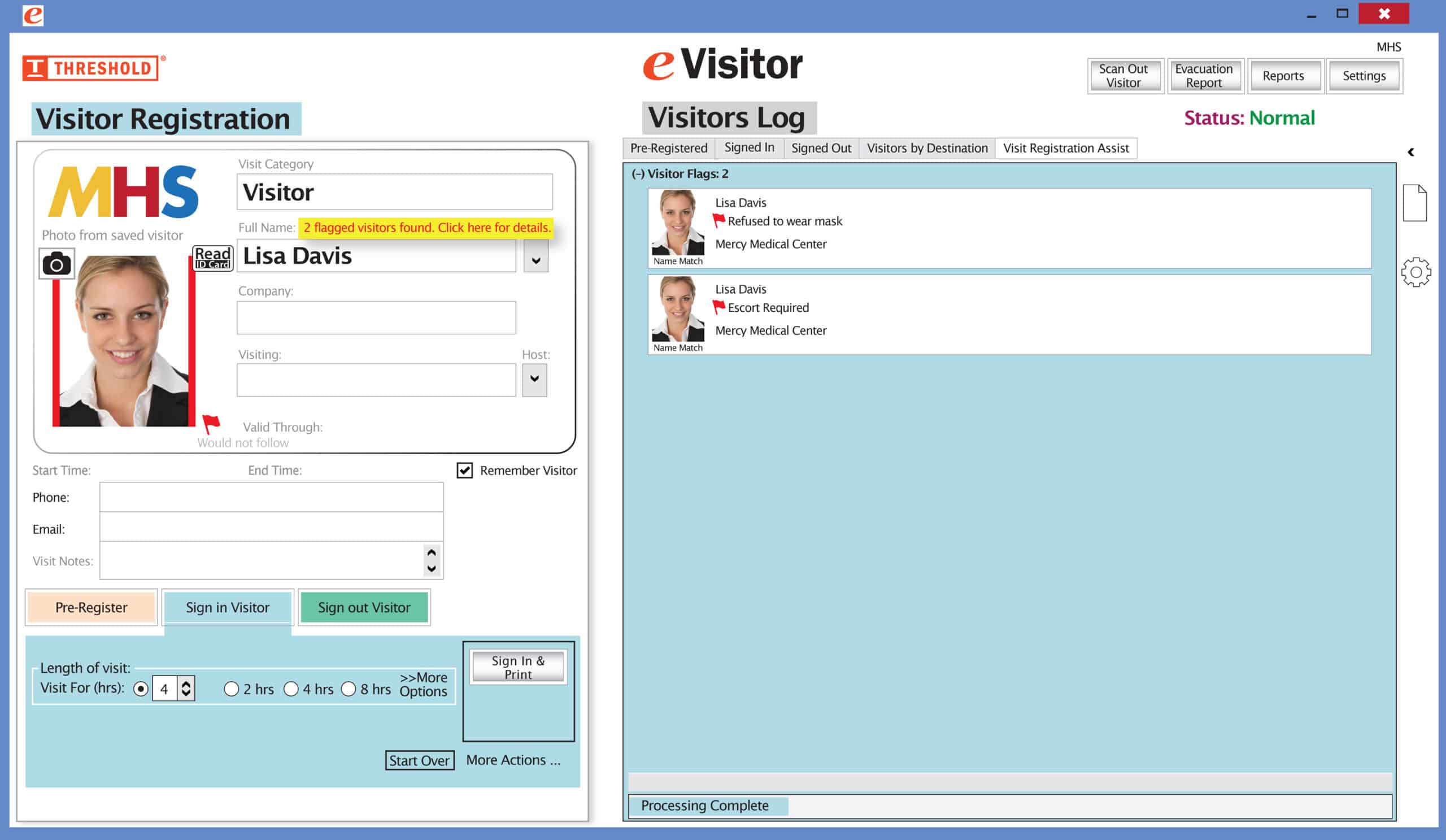Healthcare facilities are facing an ever-growing number of security threats that didn’t frequently occur 20 years ago. Patient record privacy breaches, shootings, and workplace violence are some of the security concerns that are becoming more prevalent in today’s society. To maintain a high level of security, facilities must manage visitors who enter their building. The best way to do this is by using an electronic visitor management system. However, with so many options available for this potentially expensive tool, where do you start? Here are nine questions (within four areas of concern) you should ask yourself before purchasing an electronic visitor management system.
1. Cost
What is the cost to initially purchase – and what is the 3-year cost of ownership?
Visitor management systems have obvious initial costs that include the software, equipment (such as cameras and printers), and visitor badges that visitors will wear while in the facility. It is important to realize that some components of a system have recurring fees and expenses that may not be so obvious. For example, some software licenses have annual fees after year one. Equipment such as Driver’s License Readers could come with yearly fees as well.
2. Ease of Use
How cumbersome is it to manage the system on a day-to-day basis?
When visiting a hospital, no one wants to be in a long line in the lobby waiting to be registered. A good rule of thumb is that check-in and badging should take no longer than 20 seconds per person. In addition, the system should be relatively intuitive to use and provide easy-to-retrieve details in the reports module.
Do I need a self-registration kiosk or will a receptionist tend to the system?
The current norm in the healthcare industry is to have a receptionist in the lobby. However, many newer systems can comprise kiosks that allow for self-registration, eliminating the need for an employee to monitor them. Additional benefits of a kiosk include language selection, touch screens, and visitor pass printing. There is a higher initial cost for such a device, but the long-term saving should be weighed against the cost of employing a person year-after-year for this one task.
How much technical support will I need to launch the system and to keep it working?
Electronic visitor management systems can be complex tools. Their correct implementation is critical to the security of a facility and may require technical knowledge. You should consider this important point. In addition, how reliable is the visitor management system itself? If the software goes down every so often, which employee is going to be the contact person to work with the vendor’s support team when things aren’t working properly?
3. Flexibility
Can I select specific features or do I have to buy the whole package?
Many system vendors offer “one-stop shopping” where you can get all your software, system components, and visitor badges in one purchased “bundle”. That convenience is efficient for your time, but is it efficient from a cost perspective? If you don’t need all the features a visitor management system offers, you may still need to pay for them if they are considered part of a particular “bundle”. It may be better, from a financial perspective, to pick a vendor that allows you to choose only the features you plan on using while allowing the flexibility to upgrade should the need arise in the future.
How flexible is the system to customization for my facility’s needs?
The system should include a visitors log that lets you filter on date range, visitor category, or even the history of a single visitor, then export reports, as desired, to Excel (for customized analysis), Word, or PDF. If there are additional desires for the visitors log, the visitor management system should be able to handle customizations easily to make sure you get the most out of your purchase.
4. Comprehensiveness of the system
Does the visitor management system support a wide variety of visitor information
Healthcare facilities should try to capture several key pieces of information from people who visit. In addition to a photo and the standard data on a driver’s license, you should consider a system that also captures additional information such as who the guest is visiting, where they are going, and how long they intend to stay. If the guest is a contractor or vendor, the person’s company affiliation should also be documented. Being able to categorize visitors, contractors, vendors, and volunteers is a huge plus when reviewing reports.
Does the system support optional screening and watch lists?
For the security of everyone in the building, many healthcare facilities want the option of screening unwanted visitors, such as the people who are registered as sex offenders. In addition, facilities should have the flexibility to set up their own watch lists of unwelcomed visitors, such as unhappy former employees. If an undesirable visitor of any kind tries to gain access, the system should alert security within seconds.
How is the data in the visitor management system protected?
Protecting the privacy of all types of visitors that come into a healthcare facility is critical. Visitor management systems store the visitor information either on hard drives or on a remote server. That data needs to be protected and should be encrypted with password-protected systems. The healthcare facility is liable for the protection of the data they collect and the process should be taken very seriously.

eVisitor Software is a stand-along visitor management systems that can affordably increase your facility security and help you always know who is in your building. eVisitor makes it easy for facilities to log, identify, track, and run reports on visitors. Watch this video to learn more, then request a free demo today!


